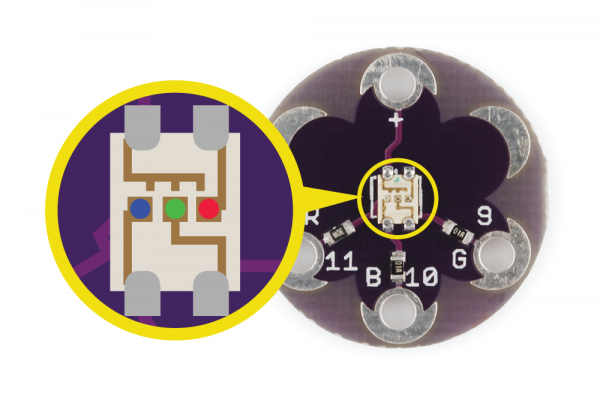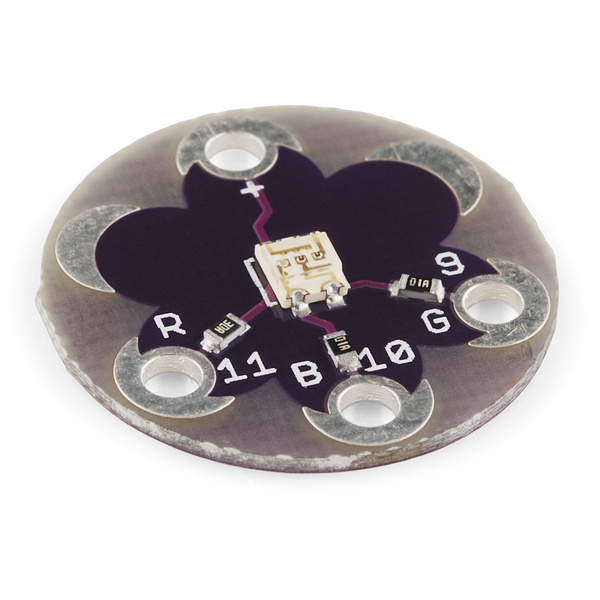LilyPad Tri-Color LED Hookup Guide
Contributors:
 Gella
Gella
Introduction
Heads up! This tutorial was written for the LilyPad Tri-Color LED with common anode. If you are using the LilyPad RGB LED with common cathode, please refer to the LilyPad RGB LED Hookup Guide.
The LilyPad Tri-Color LED is a specialty board that can produce a variety of colors. On the board is an RGB (red-green-blue) LED, made of three tiny LEDs connected together. Each of the colors in the RGB LED are connected to one of the sew tabs on the board labeled as R, G, and B.
LilyPad Tri-Color LED
DEV-08467To follow along with the code examples, we recommend:
Suggested Reading
To add this LED to a project, you should be comfortable sewing with conductive thread and uploading code to your LilyPad Arduino (for the programming examples). Here are some tutorials to review before working with this part:
What is a Circuit?
Every electrical project starts with a circuit. Don't know what a circuit is? We're here to help.
Light
Light is a useful tool for the electrical engineer. Understanding how light relates to electronics is a fundamental skill for many projects.
Insulation Techniques for e-Textiles
Learn a few different ways to protect your conductive thread and LilyPad components in your next wearables project.
LilyPad Basics: E-Sewing
Learn how to use conductive thread with LilyPad components.
Getting Started with LilyPad
An introduction to the LilyPad ecosystem - a set of sewable electronic pieces designed to help you build soft, sewable, interactive e-textile projects.
Note on Common Anode vs Common Cathode
The color channels on this RGB LED are all connected through a common anode (positive) pin. Unlike some other RGB LEDs, this configuration means that to light up the LED you need to ground the individual red, green, and blue LEDs instead of sending them power. For simple circuit hookups, this means you need to connect the R, G, or B sew tabs to ground (-) and in code set them to LOW (for digital output) or 0 (for analog output) to turn them on.

The RGB LED on the tri-color LED has 4 connections: red, green, blue channels, and a common anode pin.
If you look closely you can see the individual LEDs inside the package.
The color channels on this RGB LED are all connected through a common anode (positive) pin. Unlike some other RGB LEDs, this configuration means that to light up the LED you need to ground the individual red, green, and blue LEDs instead of sending them power. For simple circuit hookups, this means you need to connect the R, G, or B sew tabs to ground (-) and in code set them to LOW (for digital output) or 0 (for analog output) to turn them on.

If you look closely you can see the individual LEDs inside the package.
